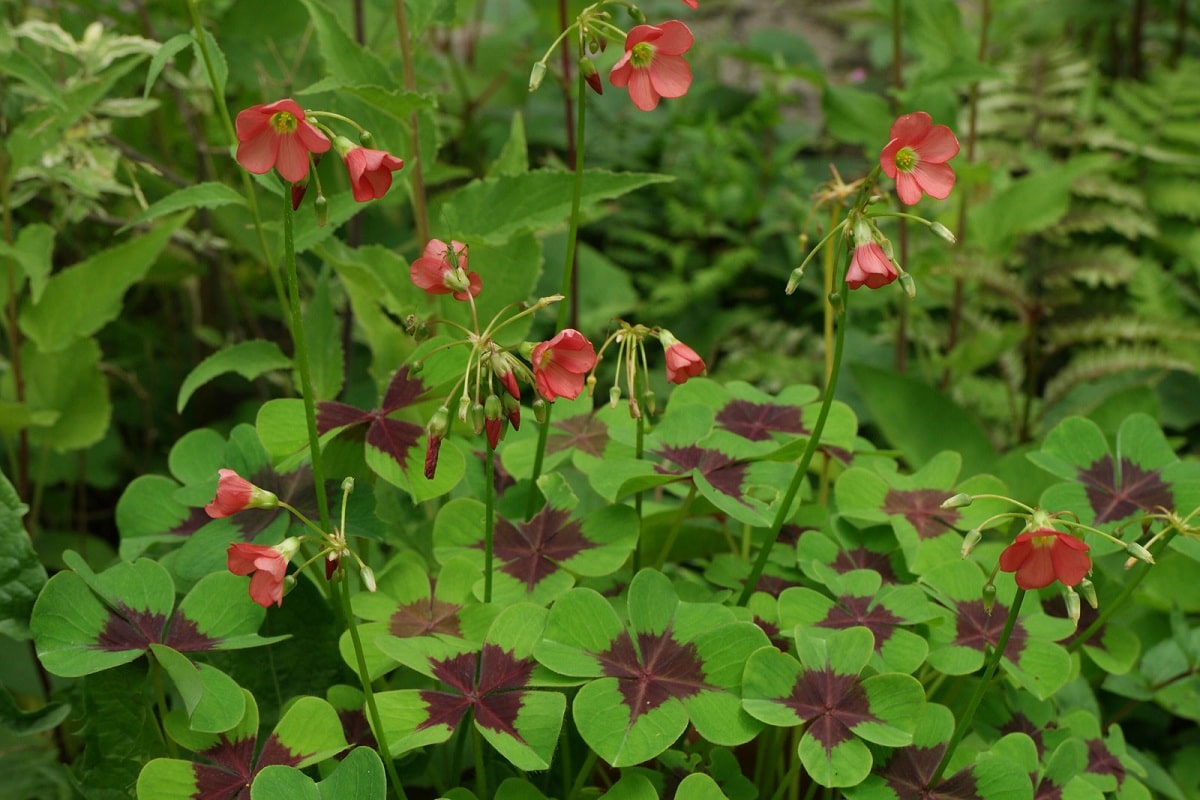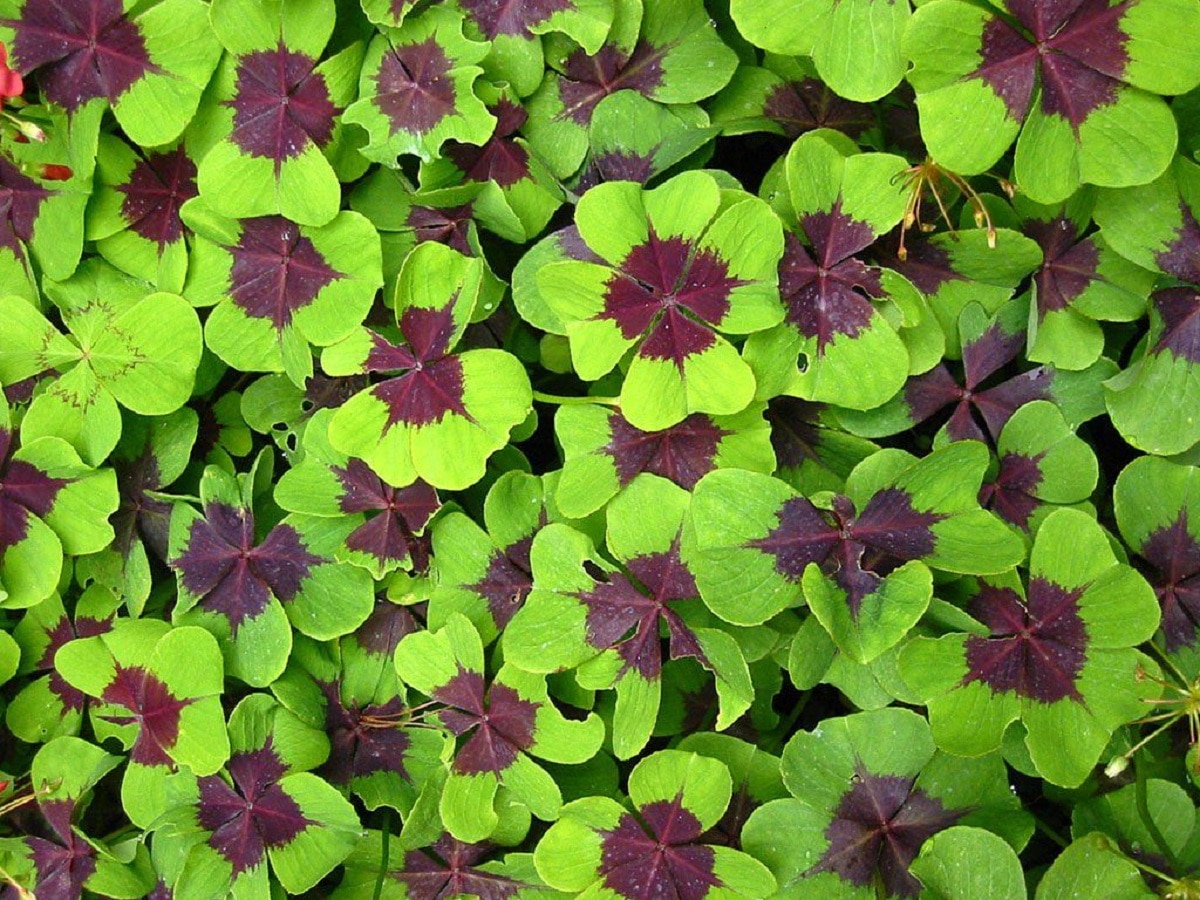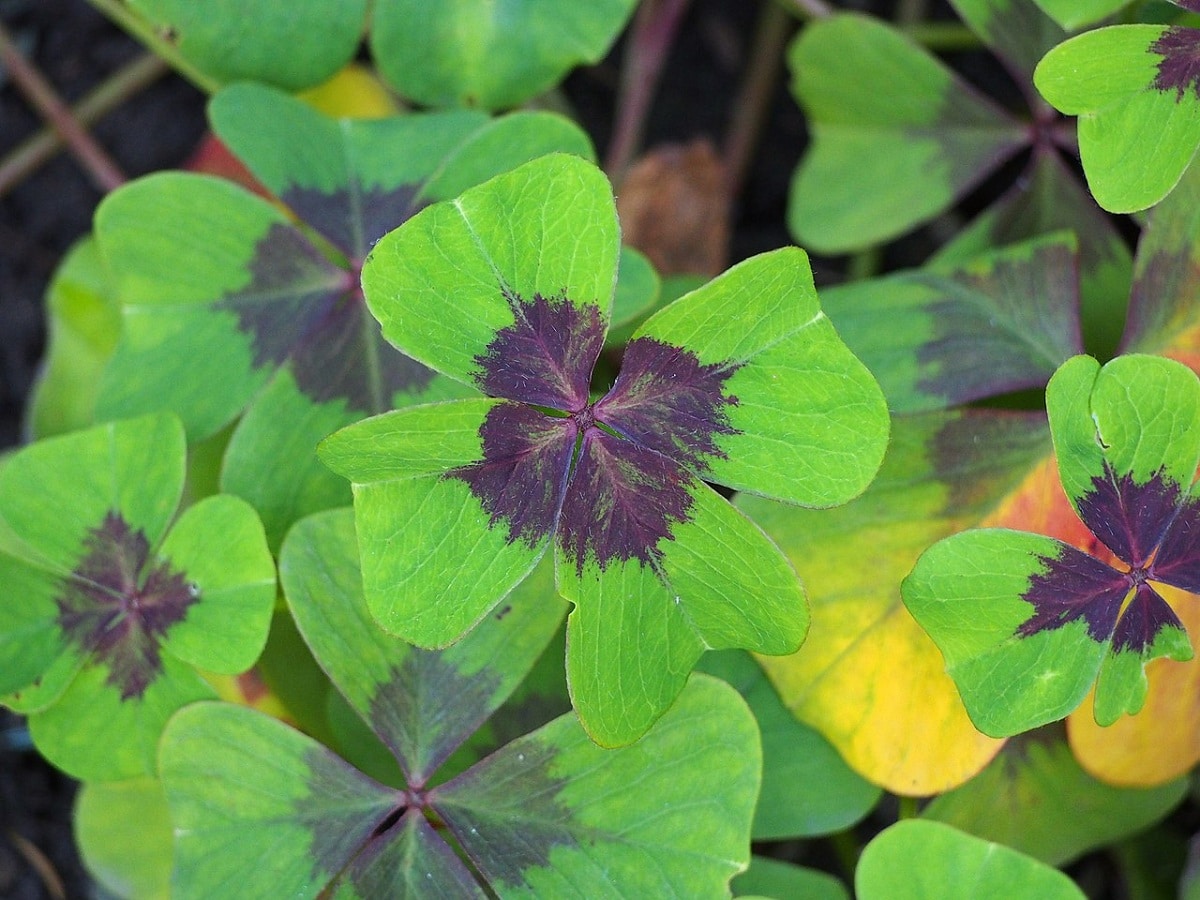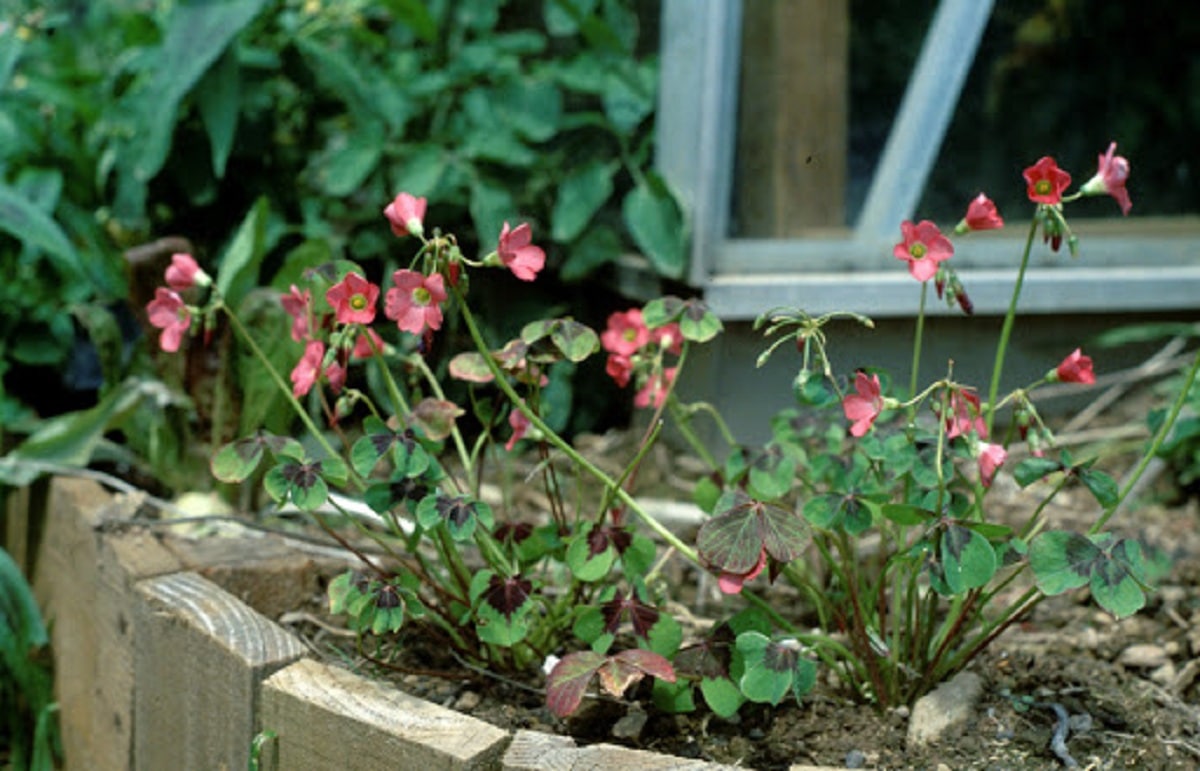
Surely on numerous occasions you have been in a garden and you have been looking for a 4-leaf clover. These clovers are said to have the ability to grant luck to those who find it. If we have a lawn in our garden and it begins to grow full of clovers there are some mixed opinions about it. Today we are going to talk about a clover that always has 4 leaves and that has different shades in the leaves and with a quite striking flowering. Its about Oxalis deppei.
In this article we are going to tell you everything you need to know about the characteristics and care of the Oxalis deppei.
Key features

We are talking about a type of clover that always has 4 leaves unlike the common 3 leaves of which you can find a copy with 4 and bring luck. In many gardens we have a lawn planted and these clovers begin to occupy space and space belonging to the lawn itself. It is in these cases where they begin to be annoying. It is not the same to have a well-groomed lawn than one that is beginning to have these types of unwanted plants.
Al Oxalis deppei It is known today by the name of Oxalis tetrasphylla. If we look closely, its leaves are cross-shaped and have a purple hue in the center. This purple hue can be reminiscent of rust. It has a velvety texture and has a certain resemblance to the leaves of the African violet plant. Flowering takes place during the summer time when temperatures are warmer. With proper care we can extend the flowering until well into the winter cold.
Being a perennial plant it does not lose its leaves during the autumn and winter season, so we can enjoy its foliage continuously. Keep in mind that it is a little intolerant of extreme cold and that it cannot bear very intense and continuous frosts. Let's see what the necessary care of this plant is.
Requirements of Oxalis deppei

In this part of the article we are going to analyze what are the necessary growing conditions for this plant. First of all, take into account the temperature and exposure at which we are going to sow the Oxalis deppei. We must consider that it is a plant not too tolerant to extreme frosts down to -10 degrees. If the area where you live does not have frosts that make the thermometer drop to this temperature, we will not have any kind of problem. We are not so sure its vegetative part is able to withstand these temperatures.
In almost any type of climate, somewhat warmer, it can withstand winters quite well since it is a bulbous plant. This makes the bulbs better able to withstand the winter since they have their own adaptation mechanisms to adverse environmental conditions. Once it has finished in winter, the bulbs are able to sprout again in spring.
Regarding the exhibition, the Oxalis deppei requires direct sun exposure. It would be nice if it was placed in a place with altitude so that it can receive direct sunlight without any obstacle. It is not a plant designed to be kept indoors, since it would not have enough light input. You need to be outdoors where you can get sunlight well and enjoy the outside environment. There are some people who try potting it indoors in cool and ventilated areas.
Caring for the Oxalis deppei

Once we know what the requirements of the Oxalis deppei, let's see what the care is. In order for it to grow in good conditions, we must provide it with a soil that has a light texture. In most cases we look for loamy or sandy loam soils. The main reason for looking for this type of soil texture is that does not tolerate puddles. This makes the soil well drained. Drainage is the ability of the soil to filter rainwater or irrigation. This means that if we irrigate or if it rains heavily, the soil will not be able to filter the water and it will retain it enough to get puddled.
For this plant to be in good condition, the soil must be light and well aerated. In addition, it is important that it has a good base of organic matter for its correct growth. And is that the Oxalis deppei It is a plant that needs a large amount of nutrients that comes from the organic matter of the soil. It cannot grow in poor soils or with too hard textures.
As for irrigation, having a fairly easy crop is very grateful as long as adequate irrigation is provided. We must know that this plant needs to maintain a more or less constant degree of humidity in the soil without becoming flooded. We repeat this of the waterlogging since we can make their roots rot if we allow it. If the soil becomes too dry we will notice it immediately. The plant begins to decline and is the clearest symptom of the lack of water. However, we should not worry excessively. And it is that by re-watering the plant it is able to recover immediately.
We can multiply the Oxalis deppei easy way. It is a plant capable of spreading through the land very easily. We can simply perform a division of sable when it has already reached a good development. In this way, we guarantee that the plant does not weaken. Another way of multiplication it is through the small bulbs. You just have to separate the bulbs and plant them underground. This will take a few weeks to germinate. The first option of multiplying the plant from the division of the bush is much easier, faster and more comfortable than dividing this plant.
As you can see, there are numerous plants in the garden that may be desirable for some people and not for others. I hope that with this information you can learn more about the Oxalis deppei and their characteristics.